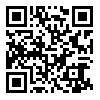Tue, Jun 3, 2025
[Archive]
Volume 3, Issue 4 (1-2012)
Caspian J Intern Med 2012, 3(4): 508-513 |
Back to browse issues page
Download citation:
BibTeX | RIS | EndNote | Medlars | ProCite | Reference Manager | RefWorks
Send citation to:



BibTeX | RIS | EndNote | Medlars | ProCite | Reference Manager | RefWorks
Send citation to:
Fallahi S, Jamshidi A R, Gharibdoost F, Mahmoudi M, Paragomi P, Hossein Nicknam M, et al . Urolithiasis in ankylosing spondylitis: Correlation with Bath ankylosing spondylitis disease activity index (BASDAI), Bath ankylosing spondylitis functional index (BASFI) and Bath ankylosing spondylitis metrology index (BASMI). Caspian J Intern Med 2012; 3 (4) :508-513
URL: http://caspjim.com/article-1-167-en.html
URL: http://caspjim.com/article-1-167-en.html
Sasan Fallahi * 
 , Ahmad Reza Jamshidi
, Ahmad Reza Jamshidi 
 , Farhad Gharibdoost
, Farhad Gharibdoost 
 , Mahdi Mahmoudi
, Mahdi Mahmoudi 
 , Pedram Paragomi
, Pedram Paragomi 
 , Mohammad Hossein Nicknam
, Mohammad Hossein Nicknam 
 , Hossein Nicknam
, Hossein Nicknam 
 , Elham Farhadi
, Elham Farhadi 
 , Mostafa Qorbani
, Mostafa Qorbani 


 , Ahmad Reza Jamshidi
, Ahmad Reza Jamshidi 
 , Farhad Gharibdoost
, Farhad Gharibdoost 
 , Mahdi Mahmoudi
, Mahdi Mahmoudi 
 , Pedram Paragomi
, Pedram Paragomi 
 , Mohammad Hossein Nicknam
, Mohammad Hossein Nicknam 
 , Hossein Nicknam
, Hossein Nicknam 
 , Elham Farhadi
, Elham Farhadi 
 , Mostafa Qorbani
, Mostafa Qorbani 

Abstract: (8285 Views)
Background: Increased incidence of renal stone has been reported in ankylosing spondylitis (AS), but unlike some well-known renal involvements, they have not been fully studied. The aim of this study was to investigate the association of AS with urolithiasis and also the relation between urinary stone and severity markers.
Methods: One hundred-sixty three AS patients were included in a cross-sectional study from Iranian AS association, Iran Rheumatology Center and Rheumatology Clinic of Shariati Hospital in Tehran. Prevalence of urolithiasis in AS patients was compared with results of a nationwide survey in Iran. Bath ankylosing spondylitis disease activity index (BASDAI), bath ankylosing spondylitis functional index (BASFI) and bath ankylosing spondylitis metrology index (BASMI) were determined for assessment of disease severity.
Results: Urolithiasis was observed in 11.7% of AS patients versus 5.7% of normal population (p=0.001). After the elimination of corticosteroid effect, the prevalence of urolithiasis was still higher in AS patients than normal population but without maintaining significant difference. Significant higher values of BASFI, BASMI, BASDAI scores were observed in AS with urolithiasis than AS without urolithiasis.
Conclusion: The results confirmed the association of AS with urolithiasis. However, this may be partly due to the effect of other factors such as corticosteroid. Moreover, urolithiais is accompanied with more severe diseases.
Methods: One hundred-sixty three AS patients were included in a cross-sectional study from Iranian AS association, Iran Rheumatology Center and Rheumatology Clinic of Shariati Hospital in Tehran. Prevalence of urolithiasis in AS patients was compared with results of a nationwide survey in Iran. Bath ankylosing spondylitis disease activity index (BASDAI), bath ankylosing spondylitis functional index (BASFI) and bath ankylosing spondylitis metrology index (BASMI) were determined for assessment of disease severity.
Results: Urolithiasis was observed in 11.7% of AS patients versus 5.7% of normal population (p=0.001). After the elimination of corticosteroid effect, the prevalence of urolithiasis was still higher in AS patients than normal population but without maintaining significant difference. Significant higher values of BASFI, BASMI, BASDAI scores were observed in AS with urolithiasis than AS without urolithiasis.
Conclusion: The results confirmed the association of AS with urolithiasis. However, this may be partly due to the effect of other factors such as corticosteroid. Moreover, urolithiais is accompanied with more severe diseases.
Type of Study: Original Article |
Subject:
Infectious Diseases
Received: 2014/01/15 | Accepted: 2014/01/15 | Published: 2014/01/15
Received: 2014/01/15 | Accepted: 2014/01/15 | Published: 2014/01/15
| Rights and permissions | |
 |
This work is licensed under a Creative Commons Attribution-NonCommercial 4.0 International License. |



